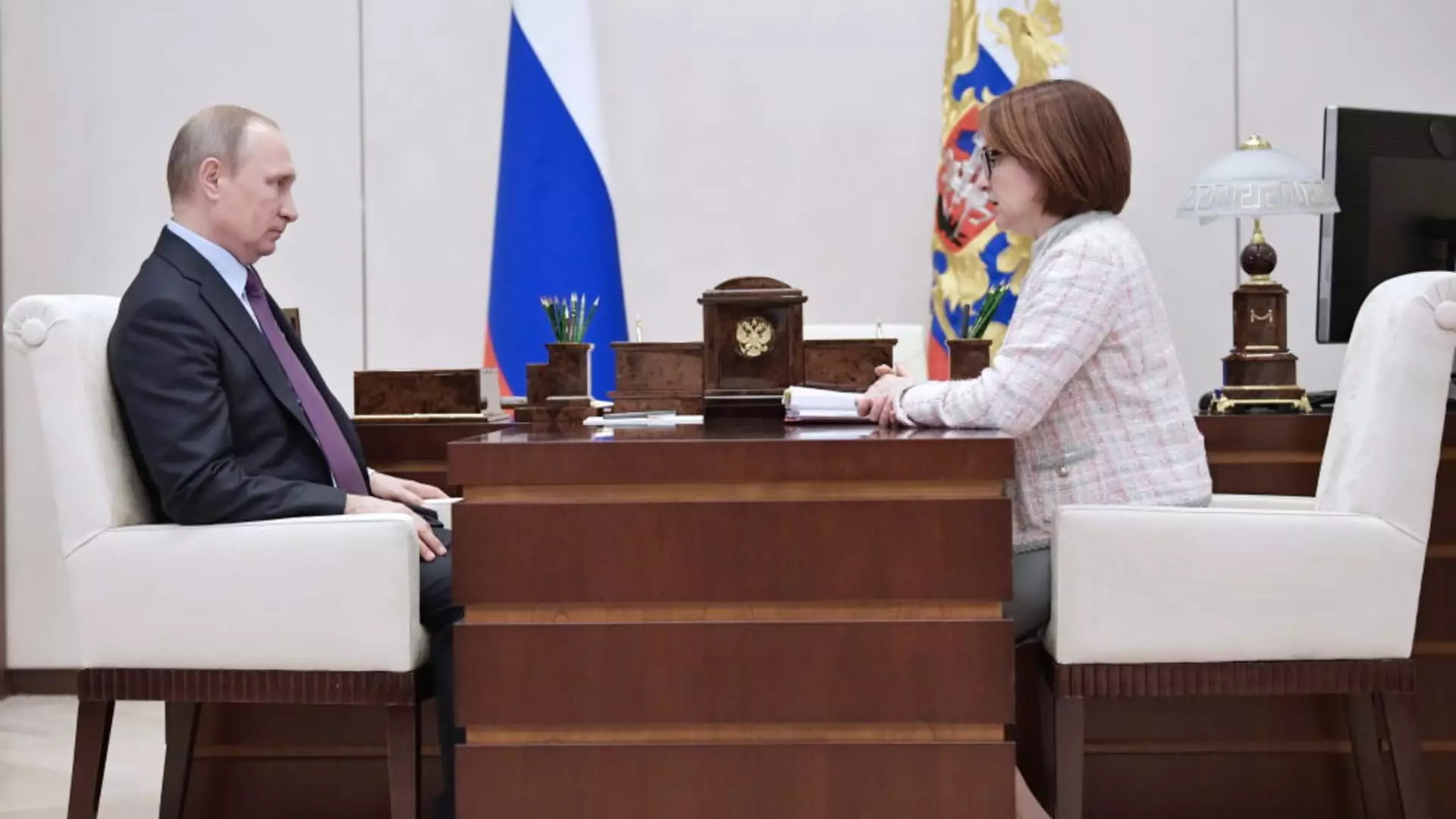The Russian economy has faced significant challenges recently, with rising inflation and a plunging currency. These issues have highlighted an emerging disagreement between the Kremlin and the country’s central bank. In response to the rapid depreciation of the ruble currency, the Central Bank of Russia (CBR) held an emergency meeting and raised interest rates by 350 basis points to 12%. However, this move has brought to the surface a divide between the government and the central bank regarding the causes and solutions to these economic troubles.
President Vladimir Putin’s economic advisor, Maxim Oreshkin, argued in an op-ed that the inflation and sinking currency were the result of “loose monetary policy” and that the central bank had the necessary tools to address the situation. The CBR justified its emergency rate hike by stating that it aimed to limit price stability risks as inflationary pressure was building up. Over the last three months, price growth has averaged 7.6% on a seasonally adjusted basis, with core inflation rising to 7.1%. The bank also noted that the ruble’s exchange rate dynamics were impacted by elevated demand for imports, which resulted from steady growth in domestic demand surpassing the capacity to expand output.
Role of Russia’s Falling Balance of Trade
Prior to the government’s intervention, the Bank of Russia attributed the inflation and currency frailties to the country’s shrinking balance of trade. Russia’s current account surplus fell over 85% year on year from January to July. Anatoly Aksakov, chairman of the Duma Committee on Financial Markets, suggested that the ruble exchange rate was under state control. This discrepancy between the government’s actions and the central bank’s analysis hints at underlying problems within the Russian economy.
Analysts argue that Western sanctions and Russia’s increasing economic isolation have been key factors affecting the economy. Agathe Demarais, global forecasting director at the Economist Intelligence Unit, highlights that Western sanctions have curbed Russia’s hydrocarbon export revenues and fueled import costs. The currency depreciation, therefore, has entered a vicious circle that will be difficult to escape from. The ruble initially plunged to 130 to the dollar following Russia’s invasion of Ukraine and subsequent sanctions. While the central bank implemented capital controls to stabilize the currency, its subsequent loosening of these controls, along with low interest rates, has entrenched the ruble’s depreciation.
The Kremlin’s Dilemma
The Russian government now faces a choice between battling inflation and propping up growth, both of which are important for social stability. Higher interest rates alone will not be sufficient to stabilize the ruble or improve the situation. The Russian leadership finds itself with limited options as it grapples with the negative factors impacting the currency that are largely beyond the control of the central bank. Blaming the central bank has become an “easy tactic” for the Kremlin, but it does not provide tangible solutions.
To address the currency woes, Russian authorities are considering the reintroduction of capital controls. This could involve compulsory sales of foreign currency revenues for exporters. The central bank’s rate hike has only slowed down the ruble’s deterioration, and further measures may be necessary. Julius Baer, a financial institution, suggests that doubling down on capital controls and introducing rules for exporters may be the most likely scenario moving forward. However, the outlook for the ruble remains uncertain, with trading in the currency remaining thin due to international isolation and sanctions.
The Impact of the War Effort and Oil Prices
The value of Russia’s exports, particularly crude oil, has decreased since G7 countries imposed a price cap on Russian oil. Import costs have simultaneously risen due to the government’s efforts to acquire goods for the war. While the current account surplus has declined, it remains at a tolerable level and within its historical average. A cheap currency can raise the ruble value of Russia’s oil revenues but also increases import costs.
Prospects for the Rouble
Julius Baer expects the ruble to be around 92 to the dollar in three months and 95 in 12 months. However, the currency’s tradeability remains limited, and uncertainty about its outlook remains high. Higher interest rates could harm consumers and local businesses, undermining public support for the war. The effectiveness of capital controls in stabilizing the ruble will be tested in the coming months.
Russia’s economy is facing significant challenges, with rising inflation and a plunging currency. The discord between the Kremlin and the central bank regarding the causes and solutions to these issues underscores the complexities of the situation. Western sanctions and Russia’s increasing economic isolation have played a significant role in these economic troubles. The reintroduction of capital controls and the rule on exporters may provide temporary relief, but the outlook for the ruble remains uncertain. The Russian government must grapple with the trade-offs between battling inflation and promoting growth, both of which are crucial for social stability.


Leave a Reply